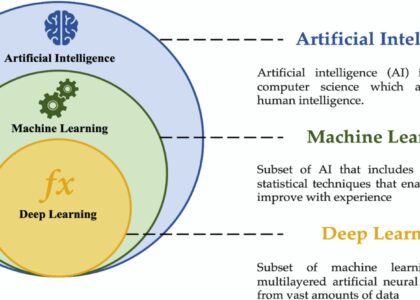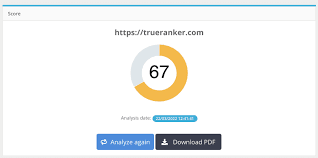The Importance of Univariate and Bivariate Analysis in Data Science
When it comes to analysing data, two fundamental techniques play a crucial role: univariate and bivariate analysis. These methods provide valuable insights into the characteristics and relationships within a dataset, helping data scientists draw meaningful conclusions and make informed decisions.
Univariate Analysis
Univariate analysis focuses on examining a single variable at a time. It involves exploring the distribution, central tendency, and dispersion of data within that variable. Common statistical measures used in univariate analysis include mean, median, mode, standard deviation, and variance.
By conducting univariate analysis, data scientists can gain a better understanding of the individual variables in a dataset. This method helps identify outliers, patterns, trends, and anomalies within the data. Univariate analysis is often the first step in data exploration and provides essential insights for further analysis.
Bivariate Analysis
Bivariate analysis, on the other hand, examines the relationship between two variables simultaneously. It aims to determine whether there is a correlation or association between the variables and how strong that relationship is. Common techniques used in bivariate analysis include scatter plots, correlation coefficients, and regression analysis.
Through bivariate analysis, data scientists can uncover dependencies and interactions between different variables in a dataset. This method helps identify patterns, trends, causal relationships, and predictive insights that may not be apparent through univariate analysis alone. Bivariate analysis plays a vital role in predictive modelling and decision-making processes.
Integration of Univariate and Bivariate Analysis
Both univariate and bivariate analyses are essential components of exploratory data analysis (EDA) in data science. While univariate analysis provides insights into individual variables’ characteristics, bivariate analysis delves deeper into understanding relationships between variables. By combining these two methods effectively, data scientists can gain comprehensive insights into complex datasets.
Furthermore, integrating univariate and bivariate analyses allows for more robust statistical modelling and hypothesis testing. By examining both individual variables’ properties and their interdependencies simultaneously, data scientists can develop more accurate predictive models and make well-informed decisions based on empirical evidence.
Conclusion
In conclusion, univariate and bivariate analyses are indispensable tools in the data scientist’s toolkit for exploring datasets effectively. By leveraging these analytical techniques intelligently, data scientists can extract valuable insights from complex datasets to drive informed decision-making processes across various industries.
Essential Tips for Mastering Univariate and Bivariate Analysis Techniques
- Univariate Analysis
- 1. Understand the distribution of a single variable by using measures like mean, median, mode, and range.
- 2. Visualise univariate data through histograms, box plots, or bar charts to identify patterns and outliers.
- 3. Use summary statistics such as standard deviation and variance to quantify the spread of data.
- 4. Consider skewness and kurtosis to assess the symmetry and tail heaviness of the distribution.
- Bivariate Analysis
- 1. Explore relationships between two variables using scatter plots or correlation coefficients.
- 4. Be cautious about inferring causation from correlation; correlation does not imply causation.
Univariate Analysis
Univariate analysis is a foundational technique in data analysis that focuses on examining individual variables within a dataset. By exploring the distribution, central tendency, and dispersion of a single variable, data scientists can uncover valuable insights into its characteristics and behaviour. Through univariate analysis, outliers, patterns, trends, and anomalies within the data can be identified, laying the groundwork for further exploration and more in-depth analysis. This method serves as an essential first step in understanding the fundamental properties of individual variables before moving on to more complex analyses.
1. Understand the distribution of a single variable by using measures like mean, median, mode, and range.
To effectively analyse a single variable, it is crucial to understand its distribution through key measures such as mean, median, mode, and range. The mean provides the average value of the data points, the median represents the middle value when arranged in ascending order, and the mode indicates the most frequently occurring value. Additionally, the range gives insight into the variability of the data by showing the difference between the maximum and minimum values. By utilising these measures in univariate analysis, data scientists can gain a comprehensive understanding of the characteristics and patterns within a single variable dataset.
2. Visualise univariate data through histograms, box plots, or bar charts to identify patterns and outliers.
Visualising univariate data through histograms, box plots, or bar charts is a valuable tip in data analysis. These visualisation techniques help to identify patterns and outliers within individual variables, providing a clear understanding of the data distribution. Histograms display the frequency distribution of data values, while box plots show the central tendency and spread of the data. Bar charts offer a visual comparison of different categories or groups within a variable. By utilising these visualisation tools effectively, data analysts can uncover insights that may not be apparent from numerical summaries alone, enabling them to make informed decisions based on a comprehensive analysis of the data.
3. Use summary statistics such as standard deviation and variance to quantify the spread of data.
In the realm of univariate and bivariate analysis, utilising summary statistics like standard deviation and variance is paramount in quantifying the dispersion of data. These measures provide valuable insights into the variability and spread of data points within a dataset, allowing data scientists to understand the distribution’s shape and characteristics. By calculating standard deviation and variance, analysts can assess the data’s consistency, identify outliers or extreme values, and make informed decisions based on the data’s variability. Incorporating these summary statistics enhances the analytical process and facilitates a deeper understanding of the dataset’s nuances.
4. Consider skewness and kurtosis to assess the symmetry and tail heaviness of the distribution.
When conducting univariate and bivariate analysis, it is essential to consider skewness and kurtosis as key indicators of the distribution’s symmetry and tail heaviness. Skewness measures the degree to which data deviates from a normal distribution, indicating whether the data is skewed to the left or right. On the other hand, kurtosis assesses the distribution’s tail heaviness, providing insights into the presence of outliers and extreme values. By evaluating skewness and kurtosis values, data analysts can better understand the shape of the data distribution and make informed decisions about further analysis techniques to apply.
Bivariate Analysis
Bivariate analysis is a powerful technique in data analysis that focuses on exploring the relationship between two variables simultaneously. By examining how these variables interact with each other, data scientists can uncover correlations, dependencies, and patterns that provide valuable insights for decision-making. Through methods such as scatter plots, correlation coefficients, and regression analysis, bivariate analysis enables a deeper understanding of how changes in one variable may impact another. This approach plays a crucial role in predictive modelling, allowing for the identification of causal relationships and the development of more accurate and effective analytical models.
1. Explore relationships between two variables using scatter plots or correlation coefficients.
To gain deeper insights into the relationships between two variables, data analysts can utilise scatter plots or correlation coefficients as part of bivariate analysis. Scatter plots visually represent the data points of two variables on a graph, allowing analysts to observe patterns and trends that indicate the strength and direction of the relationship. On the other hand, correlation coefficients provide a numerical measure of how closely related two variables are, ranging from -1 to 1. By exploring these relationships through scatter plots and correlation coefficients, analysts can uncover valuable information about the associations between variables and make informed decisions based on empirical evidence.
4. Be cautious about inferring causation from correlation; correlation does not imply causation.
It is essential to exercise caution when inferring causation from correlation in univariate and bivariate analysis. Just because two variables show a correlation does not necessarily mean that one variable causes the other. Correlation simply indicates a relationship or association between variables, but it does not prove a cause-and-effect relationship. It is crucial to conduct further research, consider other factors, and use additional statistical methods to establish causation accurately. By being mindful of this principle, data analysts can avoid making erroneous assumptions and draw more accurate conclusions from their analyses.





